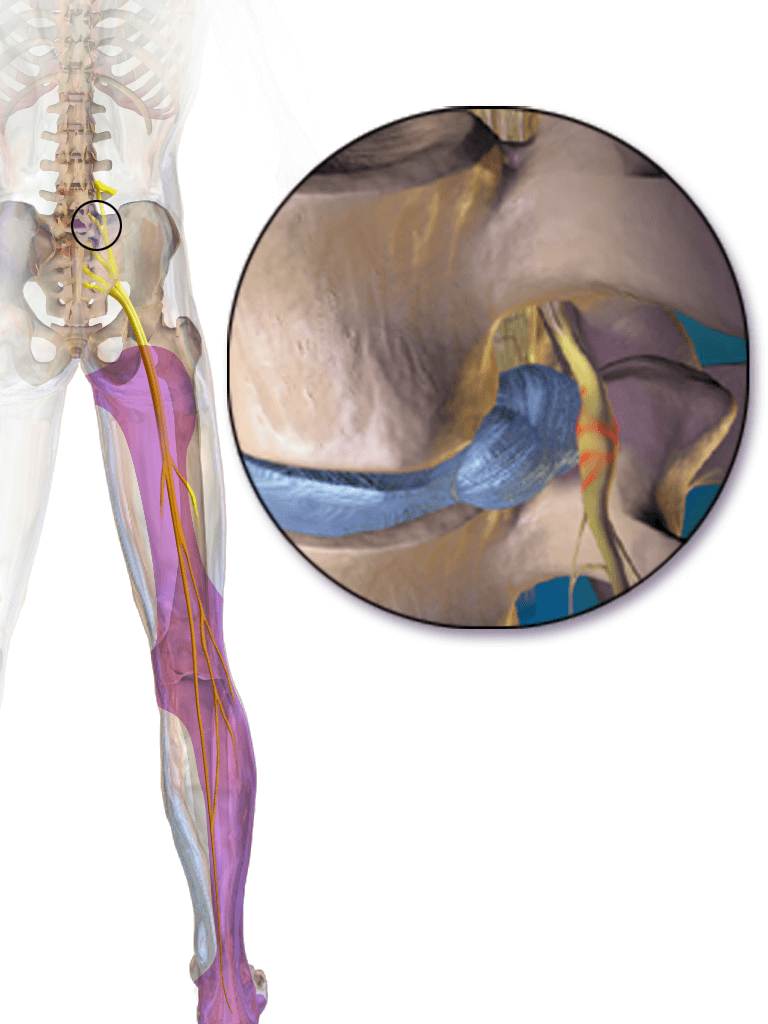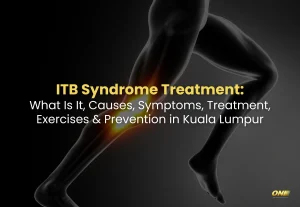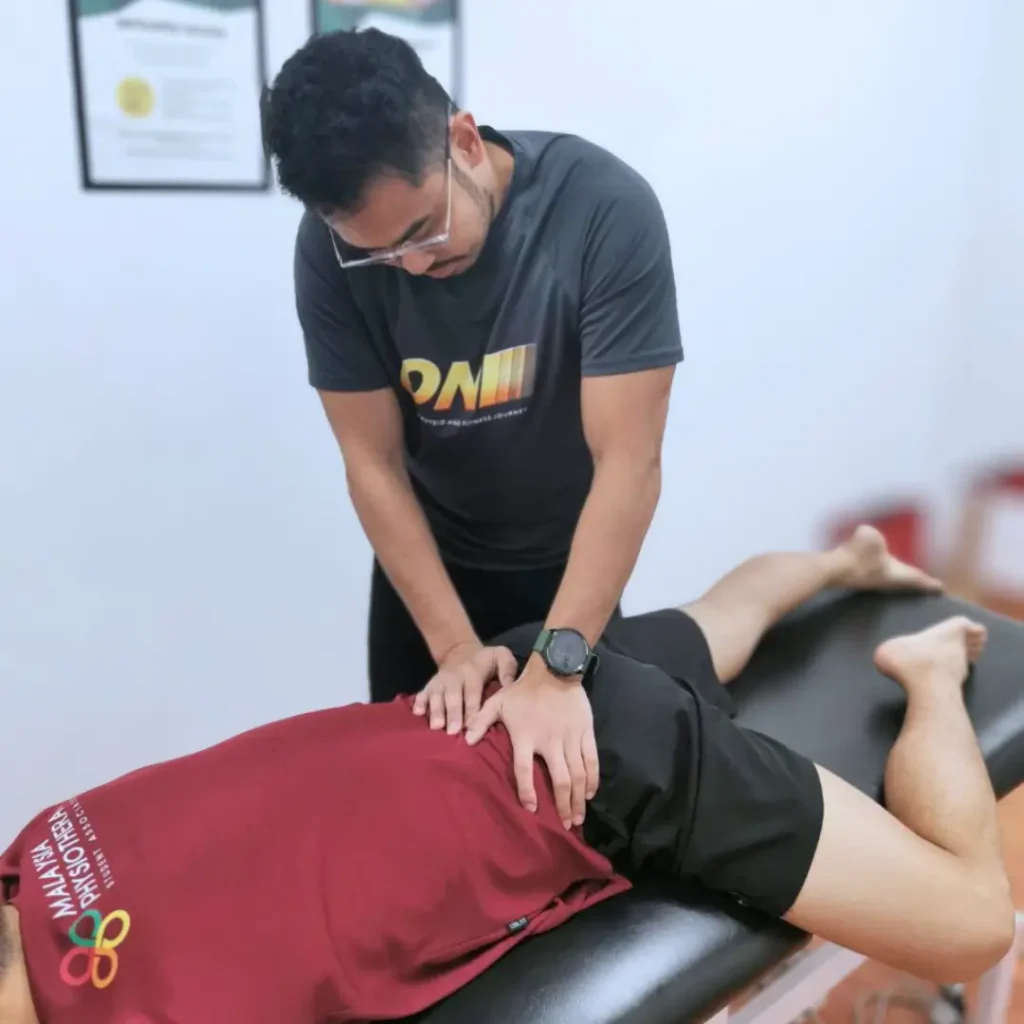Introduction
Sciatica is a common condition that can cause debilitating pain, affecting your ability to perform everyday tasks. It is characterized by pain that radiates along the sciatic nerve, which runs from your lower back through your hips and down each leg. If you’re struggling with sciatica pain, finding effective relief is crucial.
In this blog post, we’ll explore what sciatica is, its symptoms, causes, and treatment options, including physiotherapy. We’ll also provide some exercises that can help alleviate pain and discuss ways to prevent sciatica. For those in Mont Kiara and Kuala Lumpur, ONI Physio Fitness offers specialized care to help you manage and treat sciatica.
What Is Sciatica?

Sciatica refers to pain that originates from the sciatic nerve, the longest nerve in the body. This nerve starts in the lower back, branches through the hips and buttocks, and extends down each leg. Sciatica occurs when this nerve is compressed or irritated, typically due to a herniated disc, bone spur, or spinal stenosis (narrowing of the spine).
The pain associated with sciatica can vary from mild to severe and may be accompanied by numbness, tingling, or weakness in the affected leg. While sciatica can be debilitating, it is treatable, and with the right approach, most people can find relief.
Symptoms of Sciatica
The symptoms of sciatica can vary depending on the severity of the nerve compression and the location of the irritation. Common symptoms include:
- Radiating pain: The most characteristic symptom is pain that radiates from the lower back to the buttock and down the back of the leg. This pain usually affects only one side of the body.
- Sharp or burning pain: The pain can be described as sharp, burning, or excruciating, and it may worsen with certain movements, such as sitting or standing for long periods.
- Numbness or tingling: Some people experience numbness or a “pins and needles” sensation in the affected leg or foot.
- Weakness: The affected leg may feel weak, making it difficult to stand up or walk.
- Difficulty moving: Sciatica can make it challenging to perform everyday activities due to pain and discomfort.
Causes of Sciatica
Several factors can contribute to the development of sciatica, including:
- Herniated disc: A common cause of sciatica is a herniated disc in the lower spine. When the disc bulges or ruptures, it can compress the sciatic nerve, leading to pain.
- Bone spurs: Bone spurs, or bony growths on the spine, can press against the sciatic nerve, causing irritation and pain.
- Spinal stenosis: This condition involves the narrowing of the spinal canal, which can compress the sciatic nerve.
- Piriformis syndrome: The piriformis muscle, located in the buttocks, can sometimes spasm or become tight, irritating the sciatic nerve.
- Injury: Trauma to the lower back or spine can damage the sciatic nerve or the structures around it, leading to sciatica.
Diagnosis of Sciatica
Diagnosing sciatica typically involves a thorough physical examination and a review of your medical history. During the exam, your doctor or physiotherapist will assess your range of motion, reflexes, and muscle strength, as well as identify areas of pain or discomfort.
At ONI Physio Fitness in Mont Kiara, Kuala Lumpur, our experienced physiotherapists can assess your condition and determine whether sciatica is the cause of your symptoms. We may also recommend imaging tests, such as X-rays, MRI, or CT scans, to confirm the diagnosis and rule out other potential causes of your pain.
Sciatica Treatment
Effective treatment for sciatica focuses on relieving pain, improving function, and preventing future flare-ups. While sciatica can often improve with conservative treatments, addressing the underlying cause is key to long-term relief.
Physiotherapy for Sciatica
Physiotherapy is one of the most effective treatments for sciatica. At ONI Physio Fitness in Mont Kiara, Kuala Lumpur, our skilled physiotherapists will develop a personalized treatment plan tailored to your specific needs. Physiotherapy can help reduce pain, improve mobility, and strengthen the muscles that support your spine and pelvis.
Our physiotherapy approach may include:
- Manual therapy: Hands-on techniques to relieve pain, improve joint mobility, and reduce muscle tension.
- Exercise therapy: Targeted exercises to strengthen the core, back, and leg muscles, providing better support for the spine and reducing the pressure on the sciatic nerve.
- Postural training: Guidance on maintaining proper posture to minimize strain on the sciatic nerve and prevent further irritation.
- Education: Tips on pain management, lifestyle modifications, and ergonomic adjustments to reduce the risk of sciatica recurrence.
Other Treatment Options
- Medications: Over-the-counter pain relievers, anti-inflammatory drugs, or muscle relaxants may be prescribed to manage pain and inflammation.
- Epidural steroid injections: In some cases, corticosteroid injections can help reduce inflammation around the sciatic nerve, providing temporary relief.
- Surgery: Surgery is typically considered a last resort and may be necessary if conservative treatments fail to alleviate symptoms or if there is significant nerve compression.
Exercises for Sciatica
Exercise plays a crucial role in managing sciatica and preventing future episodes. Here are three effective exercises that can help alleviate sciatica pain:
1. Piriformis Stretch
- Lie on your back with your knees bent and feet flat on the floor.
- Cross the affected leg over the opposite thigh, forming a “figure 4” shape.
- Gently pull the opposite knee toward your chest until you feel a stretch in the buttock and lower back.
- Hold the stretch for 20-30 seconds, then release.
- Repeat 3 times on each side.
2. Knee-to-Chest Stretch
- Lie on your back with your knees bent and feet flat on the floor.
- Gently bring one knee towards your chest, holding it with both hands.
- Hold the stretch for 20-30 seconds, then return to the starting position.
- Repeat with the opposite leg, and perform 3-5 repetitions on each side.
3. Cat-Cow Stretch
- Start on your hands and knees in a tabletop position.
- Arch your back (cat pose) by tucking your chin to your chest and pulling your belly button towards your spine.
- Hold the position for 5 seconds.
- Drop your belly towards the floor (cow pose) while lifting your head and tailbone towards the ceiling.
- Hold the position for 5 seconds, then return to the starting position.
- Repeat 10-15 times.
Our physiotherapists at ONI Physio Fitness, Mont Kiara can guide you through these exercises and ensure they are performed correctly to maximize their benefits.
Prevention for Sciatica
Preventing sciatica involves taking proactive steps to protect your spine and maintain its health. Here are some tips to help reduce your risk:
- Maintain good posture: Whether sitting, standing, or lifting, always be mindful of your posture to avoid putting extra stress on your spine and sciatic nerve.
- Exercise regularly: Keep your core, back, and leg muscles strong with regular exercise to support your spine and reduce the risk of sciatica.
- Lift properly: Use your legs, not your back, when lifting heavy objects, and avoid twisting your body while lifting.
- Maintain a healthy weight: Excess weight can strain your spine and increase the risk of sciatica.
- Avoid prolonged sitting: Take frequent breaks to stand, stretch, and move around, especially if you have a sedentary job.
Conclusion
Sciatica can be a painful and debilitating condition, but with the right treatment and lifestyle changes, you can find relief and prevent future flare-ups. Physiotherapy is a key component in managing sciatica, helping to alleviate pain, improve function, and prevent recurrence. If you’re experiencing symptoms of sciatica, visit ONI Physio Fitness in Mont Kiara, Kuala Lumpur. Our expert physiotherapists are here to assess your condition and create a personalized treatment plan to help you live a pain-free life.
Don’t let sciatica pain hold you back. Contact ONI Physio Fitness today to schedule your assessment and start your journey toward better spine health!
















